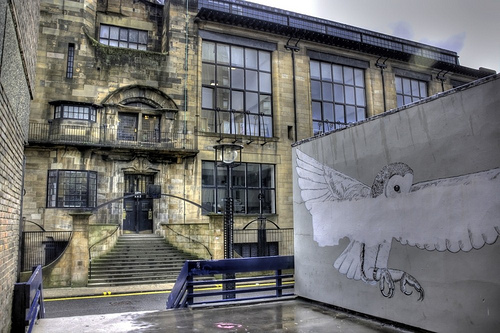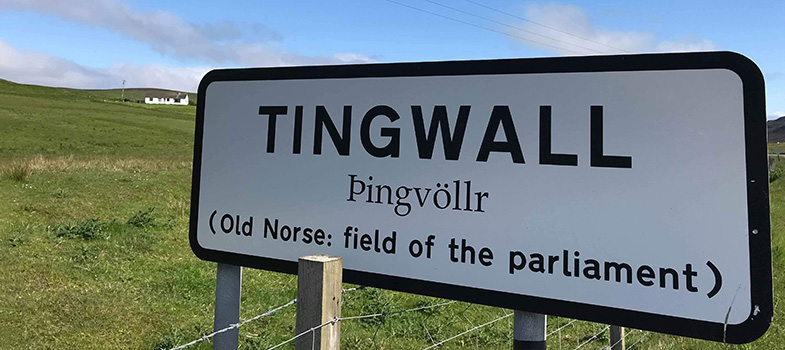7.1. Glasgow and famous female artists
Glasgow lassies

In the 1960s there began an attempt to balance the degree of plentiful discussion awarded to the group of the Glasgow Boys, whom Guthrie was a member of, by giving due attention to the work of the city’s women artists. It is thought that William Buchanan, then Head of the Scottish Arts Council, who was the first to use the name Glasgow Girls in the catalogue for the 1968 Glasgow Boys Exhibition.
The term was given further emphasis by Jude Burkhauser in 1990 when organising the major exhibition Glasgow Girls: Women in Art and Design 1880-1920 [Tip: hold Ctrl and click a link to open it in a new tab. (Hide tip)] . According to the exhibition, the group of female artists consisted of Jessie Marion King, Margaret Macdonald Mackintosh, Frances Macdonald MacNair, Helen Paxton Brown, Bessie MacNicol, Norah Neilson Gray.
“Two of the most prominent Glasgow Girls were also members of The Glasgow Four – the sisters Margaret Macdonald Mackintosh and Frances Macdonald MacNair, who formed a coalition with their husbands Charles Rennie Mackintosh and Herbert MacNair.
Together they were instrumental in the Celtic Revival, the development of the Arts and Crafts and Art Nouveau’s distinctive Scottish brand, a style which is instantly recognisable today. Artists Annie French and Bessie MacNicol are also widely recognised today for their contributions to drawing, printing and painting.”
Joan Eardley
Joan Eardley was a major figure in 20th century Scottish Art. She died in 1963, aged 42, ending her artistic career tragically soon. During her time she concentrated on two major themes and her career can be divided into three distinct phases. The first phase began when she enrolled at Glasgow School of Art in 1940 through to 1949 when she successfully exhibited paintings created when travelling across Italy.
Then from 1950 to 1957 she painted the city of Glasgow, in particular the children of Townhead which was a distressingly deprived area. These scenes and portraits of urban poverty are then contrasted sharply in her third phase in Eardley’s depiction of Catterline, a fishing village south of Aberdeen where she moved permanently in 1961.
From then until the end of her life the rural landscapes and seascapes she saw around her, and which ‘Boats on the shore’ is an example, dominated her output.
A major exhibition of her work took place in 2017 in Edinburgh’s Scottish National Gallery. Entitled A Sense of Place, it included the two themes of her work with many previously unseen drawings and sketches. Often painting out of doors, her depictions of the wild seas and overcast skies in the north east of Scotland contrasted sharply with her tenement scenes with Glasgow weans.
These central objects of Eardley’s paintings also feature in a review of the ‘A Sense of Place’ exhibition in the Scottish National Gallery in the Financial Times.
Activity 4
Part 2
In this part of the activity you will work with one of Eardley’s most famous Glasgow paintings, ‘Two Glasgow Lassies‘ (1962–63).
Before actually looking at the painting, listen to a description of this painting in Scots. While listening, you might want to have a go at sketching this painting according to the description. Then look at the painting which is featured in the Wullschlager article.
Part 3
Again, here is an opportunity to practise your spoken Scots by reading out the description of Eardley’s painting. As always in this type of activity, compare your recording with our model and repeat the process until you are happy with your own Scots pronunciation.
Transcript
Listen
This picter shaws twa wee lassies sittin thegither lookin oot at the painter. Wan has her aims foldit an the ither has her hauns oan her frock. The wan wi black herr an a reid kinna bunnet roon her heid, disna look ower happy. The wan wi broon herr looks in a kina dwam as she stares oot.
Model
This picter shaws twa wee lassies sittin thegither lookin oot at the painter. Wan has her aims foldit an the ither has her hauns oan her frock. The wan wi black herr an a reid kinna bunnet roon her heid, disna look ower happy. The wan wi broon herr looks in a kina dwam as she stares oot.
And if you have not understood all words in the description, here is our translation of the short text into English.
Answer
This picture shows two girls sitting together and looking out at the painter. One has her arms folded, the other has her hands on her dress. The one with black hair and a red type of scarf around her head does not look very happy. The one with brown hair looks as if she is in a day-dream as she gazes fixedly out (at the observer).
7. Introductory handsel
